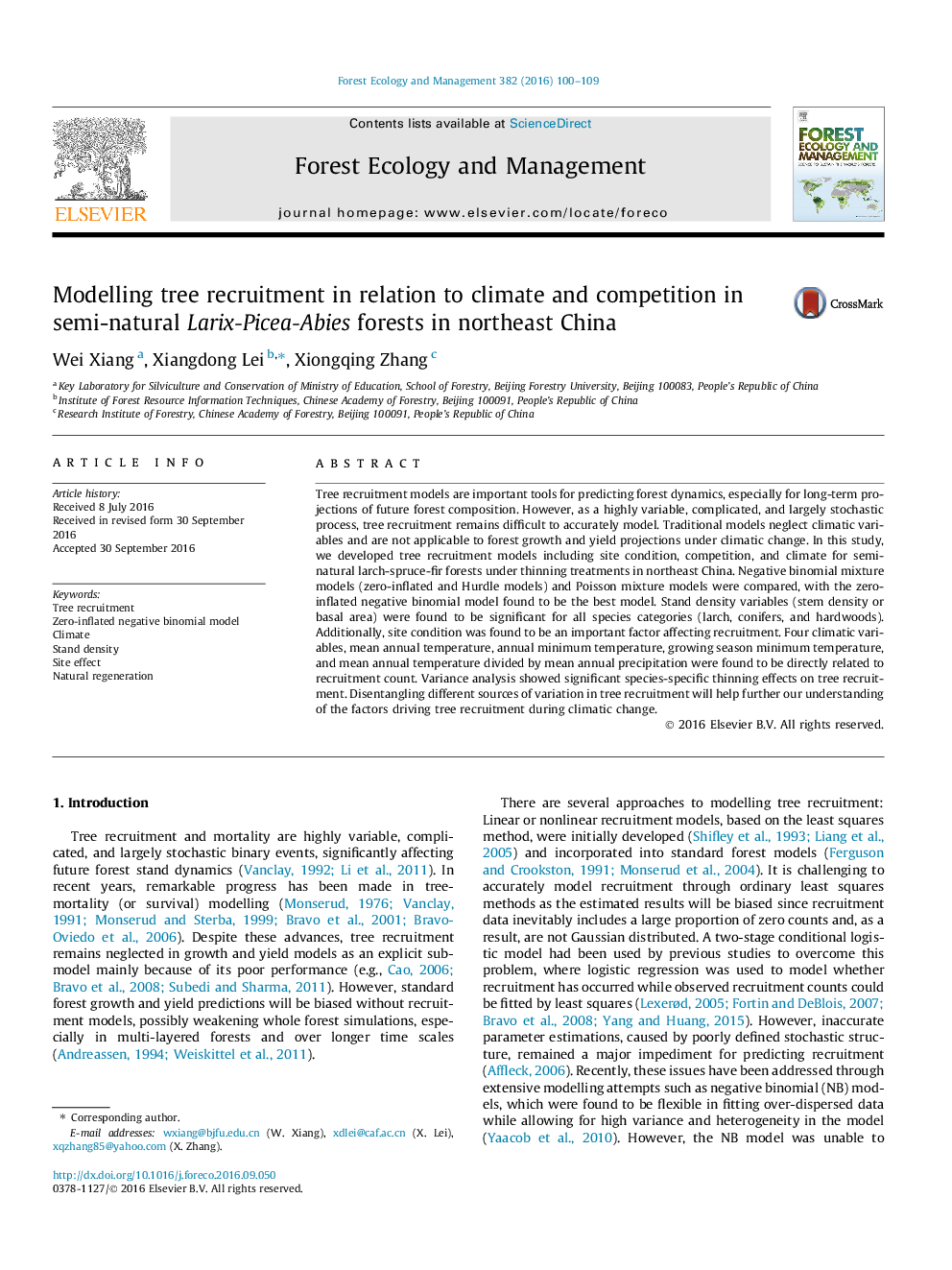| Article ID | Journal | Published Year | Pages | File Type |
|---|---|---|---|---|
| 4759697 | Forest Ecology and Management | 2016 | 10 Pages |
Abstract
Tree recruitment models are important tools for predicting forest dynamics, especially for long-term projections of future forest composition. However, as a highly variable, complicated, and largely stochastic process, tree recruitment remains difficult to accurately model. Traditional models neglect climatic variables and are not applicable to forest growth and yield projections under climatic change. In this study, we developed tree recruitment models including site condition, competition, and climate for semi-natural larch-spruce-fir forests under thinning treatments in northeast China. Negative binomial mixture models (zero-inflated and Hurdle models) and Poisson mixture models were compared, with the zero-inflated negative binomial model found to be the best model. Stand density variables (stem density or basal area) were found to be significant for all species categories (larch, conifers, and hardwoods). Additionally, site condition was found to be an important factor affecting recruitment. Four climatic variables, mean annual temperature, annual minimum temperature, growing season minimum temperature, and mean annual temperature divided by mean annual precipitation were found to be directly related to recruitment count. Variance analysis showed significant species-specific thinning effects on tree recruitment. Disentangling different sources of variation in tree recruitment will help further our understanding of the factors driving tree recruitment during climatic change.
Keywords
Related Topics
Life Sciences
Agricultural and Biological Sciences
Ecology, Evolution, Behavior and Systematics
Authors
Wei Xiang, Xiangdong Lei, Xiongqing Zhang,
